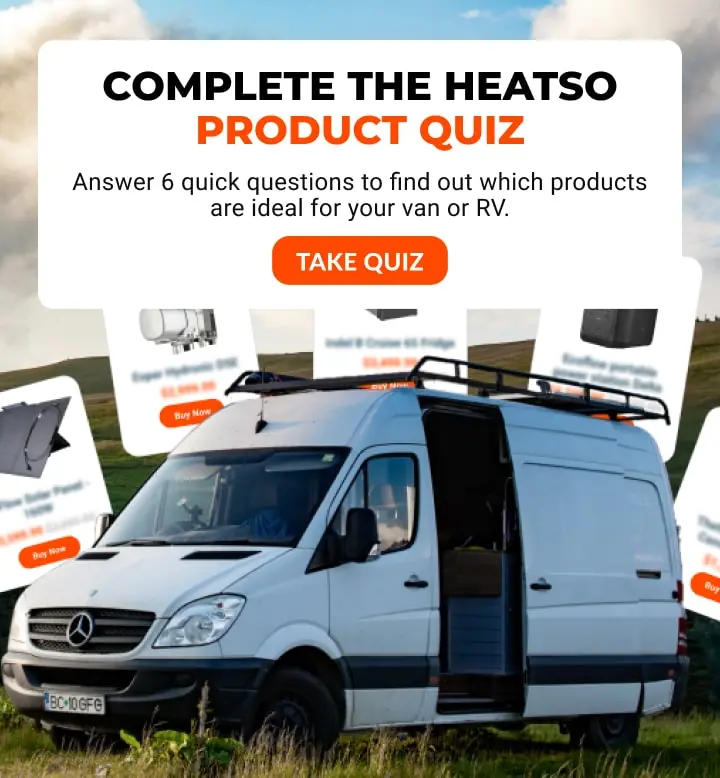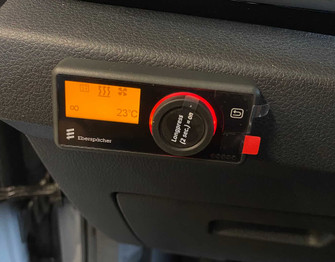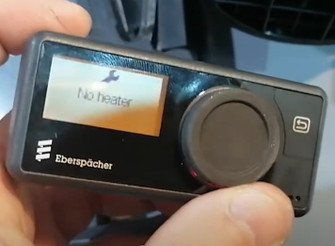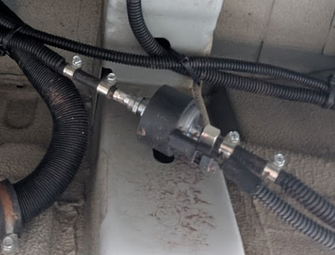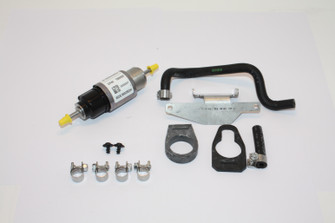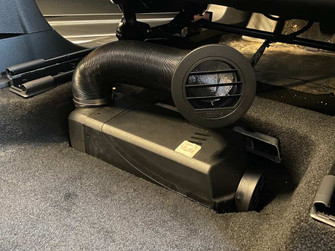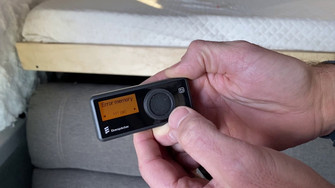RV Water Heater Parts: Everything You Need to Know
Posted by rp@heatso.com on 16th Apr 2025
RV water heaters come in various types, including diesel, gasoline, propane, electric, or tankless models. Hot water systems have a lot of essential components, from heating elements and thermostats to anodes and exhaust systems.
Understanding RV Water Heater Parts: A Full Breakdown
RV water heaters come in various types, including diesel, gasoline, propane, electric, or tankless models. Hot water systems have a lot of essential components, from heating elements and thermostats to anodes and exhaust systems.
If you’re travelling in your van or RV, chances are you rely on your RV water heater for hot showers and washing dishes. Understanding your RV water heater parts will help you fix and replace them when needed, so you stay comfortable on your adventures.
In this guide, we’ll break down all the important parts of RV water heaters, how they work, and why you might need to replace them.
RV Water Heater Types and Their Main Components
Diesel and Gasoline-Powered RV Water Heaters
Diesel and gasoline-powered RV water heaters use fuel from your RV’s main tank to heat water. They are ideal for off-grid travel and cold-weather camping, and they integrate with your RV's engine preheating system.
These systems typically include a fuel pump that draws diesel or gasoline from the RV’s tank, a combustion chamber that burns the fuel to create heat, and a heat exchanger that transfers heat to the water supply.
Some appliances, like hydronic heating systems or air and water heaters, like Webasto Dual Top ST 6, also integrate with the RV’s coolant system to provide both hot water and interior heating.
Propane-Powered RV Water Heaters
Propane-powered RV water heaters are common in many RVs and are powered by a propane burner. These heaters need a burner assembly and a pilot light to start the propane. They also require a thermocouple to turn off the gas if the pilot light burns out.
A control valve is needed to manage the gas flow, and a pressure relief valve prevents excess pressure from building up.
Electric RV Water Heaters
Electric RV water heaters use electricity to heat the water. Their main parts include an RV water heater element, which is a coil that heats the water.
There is also an RV water heater thermostat to control the temperature. A high-limit switch stops overheating, and a control board manages the electrical functions.
Combination Gas and Electric RV Water Heaters
A combination gas and electric RV water heater gives you the option of using either propane or electricity to heat your water.
These units contain all the parts from both gas and electric models, which makes them a great choice for RVers who want multiple fuel options.
Tankless RV Water Heaters
Tankless RV water heaters provide hot water on demand, saving energy and reducing the need for a storage tank. Instead of storing hot water, they rapidly heat water while it is flowing through the system.
Their key parts include a heat exchanger for rapid water heating, and a flow sensor to detect water movement and activate the heater. Additionally, it has an electronic ignition system that replaces a standing pilot light for better efficiency.
Key Parts & Maintenance for Diesel & Gas RV Water Heaters
When it comes to heating water in your RV, diesel and gasoline-powered water heaters are some of the best options out there.
These heaters provide a steady hot water supply and, in some cases, even integrate with the vehicle’s coolant system for extra heating power.
Below, we’ll review the most important RV water heater parts and their maintenance options in diesel and gasoline-powered systems.
Fuel Pump
The fuel pump draws diesel or gasoline from your RV’s main fuel tank to supply the heater. If your hot water suddenly stops working, a clogged or faulty fuel pump might be to blame.
Dirt, debris, or air bubbles can mess with fuel flow, leading to lukewarm showers or no hot water at all.
Pro tips to keep it running smoothly:
- Regularly check for leaks or blockages in the fuel line.
- Replace fuel filters as recommended by the manufacturer.
- Use top-quality fuel to prevent carbon buildup in the combustion chamber.
Combustion Chamber
Combustion chambers are where fuel and air mix and ignite, creating heat. If this part is dirty or damaged, your heater won’t burn fuel efficiently, meaning less heat and more frustration.
What to watch out for:
- Black smoke coming from the exhaust? That’s a sign of carbon buildup.
- A weak or flickering flame? You might have airflow issues.
- Strange smells? Your combustion chamber could need a deep clean.
Heat Exchanger
Heater circulates hot coolant through the plate exchanger, where the domestic water is heated in between the plates.
If your water isn’t as hot as it used to be, a clogged or failing heat exchanger could be the problem. Over time, dirt and debris can slow things down, forcing your heater to work harder than necessary.
Keep it in a peak shape by:
- Cleaning the heat exchanger regularly.
- Checking for corrosion or leaks. Once it starts rusting, it’s only a matter of time before it fails.
Glow Plug/Igniter
A glow plug or igniter helps ignite the fuel mixture. If your heater fails to start, there’s a good chance the igniter is the issue.
Signs it needs replacing:
- Your heater won’t turn on.
- You hear repeated clicking noises but no ignition.
- The igniter looks worn out or cracked.
Exhaust System
Since water heaters burn fuel, they have an exhaust system to release combustion gases outside the RV. Keeping the exhaust clean is key to safe operation.
Since water heaters burn fuel, they have an exhaust system to release combustion gases outside the RV. Keeping the exhaust clean is key to safe operation.
Why it is important to check:
- A blocked exhaust hose or exhaust muffler can cause harmful fumes to back up into your RV.
- Soot buildup can reduce heater efficiency.
- If you notice black smoke or weird odors, it’s time to clean or replace exhaust parts.
Control Unit
The control unit is like the brain of your RV water heater. It oversees fuel flow, ignition, and temperature regulation. To identify issues, use a professional diagnostics tool, as built-in diagnostics may not detect ECU failures.
If you suspect an ECU failure, professional diagnostics by trained Eberspacher or Webasto installers are recommended. While users can buy diagnostic tools, they require expertise and are more cost-effective for workshops or fleet operators.
If your heater is not responding to settings:
- The control board might need to be reset.
- Loose or corroded wires could be causing the issue.
- If the problem persists, you may need a replacement.
Choosing the Right Parts for RV Water Heater
When parts wear out, choosing the right RV water heater replacement parts is essential for keeping your system running smoothly. Here are some key factors to consider:
Match Your Heater Model
Not all parts for an RV water heater are universal. Your heater parts will have a specific part number, usually found on the part itself, or in the owner’s manual.
It is important to use this part number when looking for replacement parts to guarantee compatibility. If the part number is not visible, check the silver label on the heater, where you’ll find both the heater’s part number and model.
You can always reach out to Heatso support with the part number, heater model, and a list of required parts, and we’ll help identify the correct parts for your heater.
OEM vs. Aftermarket Parts
- OEM (Original Equipment Manufacturer) parts are made by the original water heater manufacturer. They are designed specifically for your unit and are usually more reliable.
- Aftermarket parts are made by third-party manufacturers and are cheaper. While some aftermarket parts perform just as well as OEM parts, others may have slight design differences that reduce efficiency.
- Which should you choose? If reliability and quality are your top priorities, go with OEM parts. Budget-friendly aftermarket parts are a good alternative, but make sure to purchase them from a reputable supplier.
Where to Buy Quality RV Water Heater Replacement Parts
- Manufacturer Websites or Specialty Stores – The best place for guaranteed OEM parts. Heatso.com is one of the largest genuine RV water heaters and parts suppliers in the USA.
- Online Retailers – Amazon, eBay and similar platforms offer a mix of OEM and aftermarket parts. Please note that such marketplaces have very limited or no technical support at all. We’ve noticed that many heaters and parts sold on eBay or Amazon are designed to work with a specific vehicle or truck manufacturer, and they might not be suitable for standalone systems commonly used in vans or RVs.
- Local RV Repair Shops – A great option if you need expert advice or parts right away.
- RV Forums and Communities – Many experienced RVers recommend specific brands and sellers, helping you find reliable parts at the best prices. Van Living Forum or Reddit would be great examples. However, it is usually a “hit or miss”, so you have to choose your information sources carefully.
Wrapping Up: Essential RV Water Heater Parts for Every RVer
Understanding your RV water heater parts makes it easier to troubleshoot problems, perform maintenance, and choose the right RV water heater replacement components when needed.
Whether you’re upgrading your RV water heater element, replacing a glow plug, or fixing a control unit, being proactive helps you avoid cold showers and expensive repairs.
Need reliable RV water heater parts? Explore our top-rated selection and keep your system in peak condition. Browse now!



